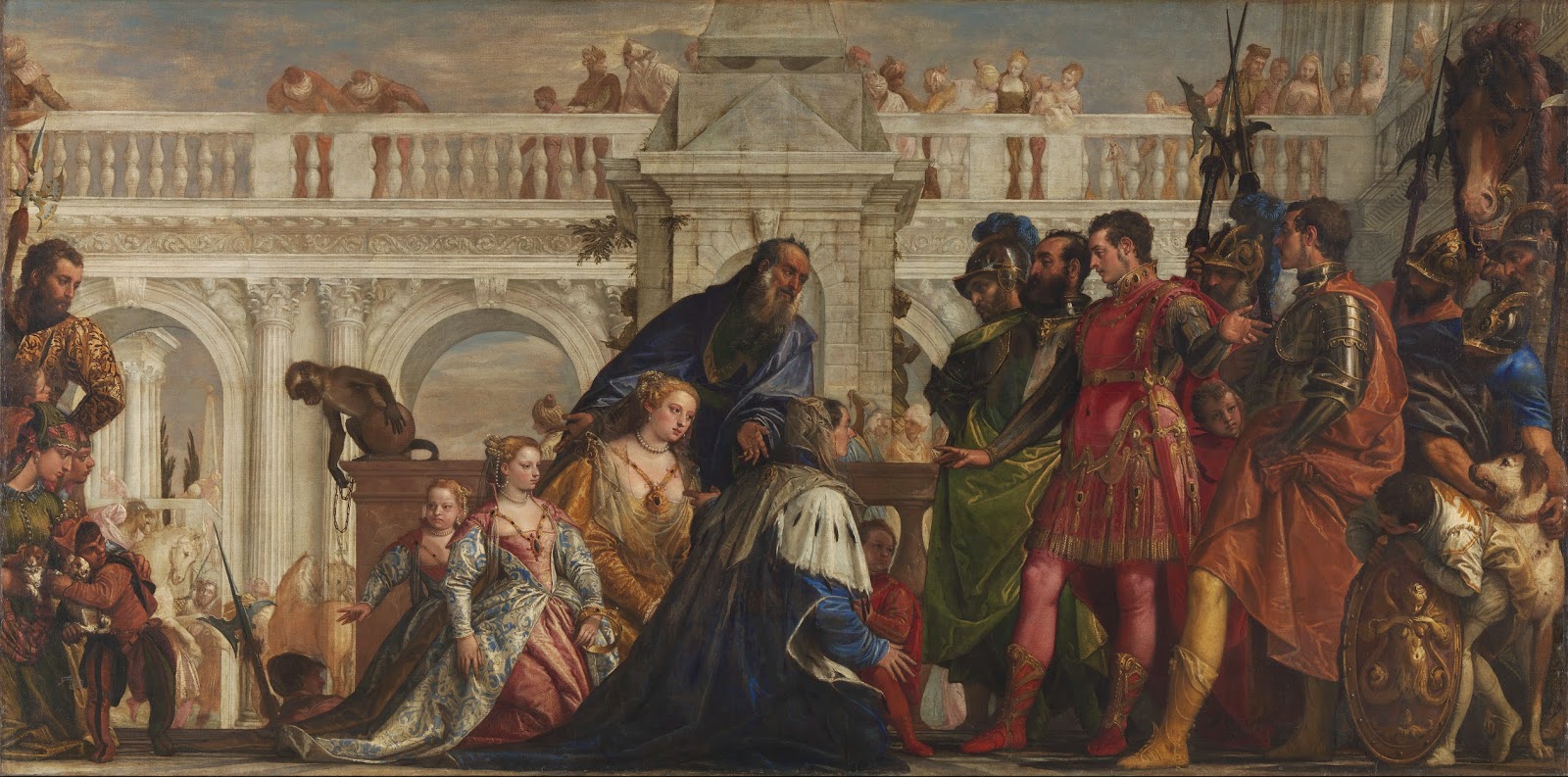Paolo Veronese: The Family of Darius III before Alexander the Great (1565-1567)
(National Gallery, London, UK)
This
magnificent painting is one of my favorite (click on the painting to see the bigger version). It illustrates a story from Quintus
Curtius Rufus. At the battle of Issus, 5 November 333 BC, Alexander the Great
defeated the Persian king Darius III. Darius managed to escape but his family,
his wife Statira, his mother, Sisgambis, and his daughters Statira and Drypetis
were captured by the Macedonians. When Alexander visited the family, Sisgambis
mistook taller Hephaestion, a general in the army of Alexander the Great, for
being Alexander and offered Hephaestion reverence and pleaded for mercy. When
Sisgambis realized her error, Alexander forgave her and magnanimously said that
Hephaestion, too, was Alexander. This assuaged Sisgambis's embarrassment over her
confusion and served as a compliment to Hephaestion. Veronese shows the meeting
in a strange mixture of 16th-century and classical clothing. Alexander is the
person in the red armor, he is pointing to Hephaestion with his left arm. The
buildings at the back are fashioned like a theatre set with the persons at the
front being the actors in this stage play. We, the viewers, are sitting in the
front row and are able to experience the clemency of Alexander the Great. We
are also forgiven for by Alexander by thinking Hephaestion is the Macedonian
king. This painting was created in 1565-7.
